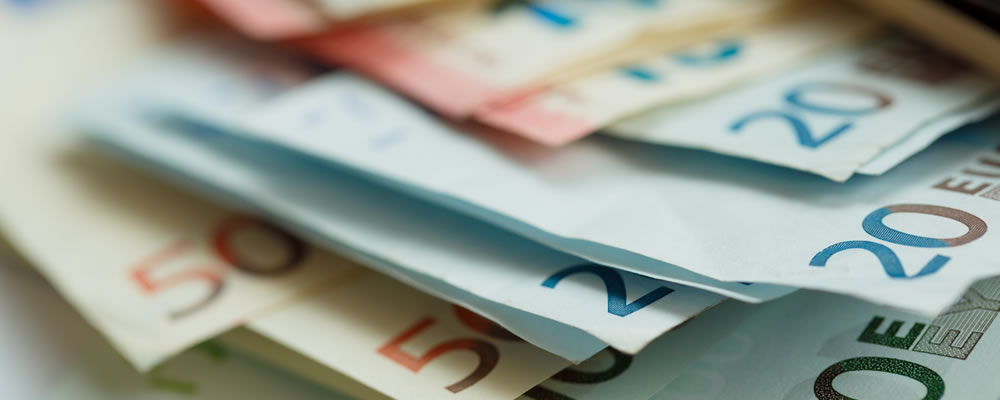- Single currency not encouraged by stronger Eurozone inflation – Markets anticipate continued weakness in wake of Brexit vote
- BoE indicated possibility of summer policy easing – Heightened odds of imminent rate cut prompted Pound slump
- US manufacturing data bettered expectations – ‘Greenback’ trended higher on signs of domestic economic strength
- Brexit uncertainty predicted to weigh on Pound and Euro in coming days – Investors expected to remain cautious as referendum fallout continues
Improved Eurozone ecostats have failed to offer sufficient support to the Euro ahead of the weekend, with the EUR USD exchange rate slumping as Brexit fears continue to dominate market outlook.
Strong Eurozone Data Not Enough to Improve Euro (EUR) Appetite
Sentiment towards the Euro (EUR) remained mixed on Thursday, in spite of Eurozone data proving generally encouraging. The worry of political contagion from the UK’s decision to leave the EU and the possible economic ramifications of Brexit have continued to weigh on the outlook of the single currency. This muted the positive reaction to stronger-than-expected German Retail Sales and Unemployment Change figures, even though the Eurozone’s powerhouse economy showed signs of robustness. An improved Eurozone Consumer Price Index was also of limited impact, despite edging back into positive territory once again.
Despite the finalised raft of Eurozone Manufacturing PMIs for June being revised upwards, the common currency continued to flounder on Friday morning. While this demonstrated a six-month high for sector growth in the currency union traders were inclined to overlook the data, with growth expected to slow imminently in response to Brexit-based uncertainty. Investors have not been encouraged by the hard-line approach to negotiations that has been taken, with comments from EU Trade Commissioner Cecilia Malmstrom suggesting that turmoil and uncertainty is likely to continue for some years to come.
Pound (GBP) Weakened by Rising Odds of July BoE Rate Cut
The surprise withdrawal of former frontrunner and prominent ‘Leave’ campaigner Boris Johnson from the Conservative leadership race offered the Pound (GBP) some support yesterday. Investors were reassured by the fact that Johnson would not become the UK’s next Prime Minister; a prospect that had caused some concern within the markets. Even so, political uncertainty is unlikely to particularly ease in the coming weeks thanks to the ongoing Tory leadership contest and the apparent disintegration of the opposition Labour party.
Comments from Bank of England (BoE) Governor Mark Carney soon overshadowed any positive uptick prompted by Johnson’s announcement, however, as markets turned to the policymaker for guidance. While Carney expressed some optimism in the domestic economy’s ability to weather the volatility stemming from a Brexit he also indicated that further monetary easing was likely imminent.
The heightened odds of a July interest rate cut gave investors little reason to favour the Pound further, allowing the Euro to Pound (EUR/GBP) exchange rate to return to a strong uptrend on Thursday afternoon. As researchers from Westpac noted:
‘We expect two 25bp Bank Rate cuts by the 15th September 2016 MPC meeting. The precise timing is not completely clear but the BoE has clearly given itself the option of cutting Bank Rate at the next scheduled meeting on 14th July 2016.’
Thus, in spite of a better-than-expected rebound in the latest UK Manufacturing PMI this morning, the Pound remained on a weaker footing against rivals ahead of the weekend.
Bullish Manufacturing Data Boosted US Dollar (USD) Exchange Rate
Despite some mixed US Jobless Claims figures the appeal of the US Dollar (USD) remained buoyed by safe-haven demand this week. Investors were also encouraged by an improved Chicago Purchasing Manager Index, which strengthened further-than-anticipated from 49.3 to 56.8 in June. This indicates that the world’s largest economy is not suffering as much drag from downside pressures as previously thought. The stronger showing also offers encouragement for the latest ISM Manufacturing report, with a continued trend of positive data likely to shore up demand for the ‘Greenback’ further.
Even so, robust manufacturing data is not likely to particularly impact the chances of the Fed opting to raise interest rates before the end of the year. In light of recent market volatility, global uncertainty and the upcoming US presidential election, the odds of another rate hike seem minimal. Nevertheless, with the appeal of higher-risk assets remaining limited, the US Dollar is expected to maintain its generally dominant form against rivals.
Current EUR, GBP, USD Exchange Rates
At the time of writing, the Euro to Pound (GBP/EUR) exchange rate was trending higher around 0.8340, while the Euro to US Dollar (EUR/USD) pairing was slumped in the region of 1.1097.



